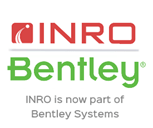Demand model or operational model: why not integrate both, in one?
Trent Ekanayake, Arash Fatemi, Theo Panagopolous & Bilee Oliver
Clarity Consult, Wodonga City Council & AlburyCity Council, Victoria & NSW
This presentation was delivered at the 2021 Online Conference Series and until October 2022 is only available to registered delegates and Content Access Pass holders via Interchange. For information on accessing this and other presentations please review the Content Access Pass options.
ABSTRACT
Transport demand and operational modelling tools and their practitioners are typically segregated in practice. As such, practitioners in each tend to focus on advancing their discipline and have limited influence or feedback on the alternate, despite the recognition they are both complementary tools used in project assessments. Whilst the current isolated approach may lend itself to advancements in each discipline, with demand models advancing to tour based or activity based thinking and operational models to more realistic representations of signal actuation, the advancement towards each other is a gap with limited movement. This could partly be attributable to the scope vs scale limitations posed by lack of computing resources, with strategic models at large scale and limited network detail and operational models vice versa. However, until such time as we can run a sophisticated demand model of a metropolitan city or country wide scale in an actuated dynamic microsimulation network, it would appear the pursuit is futile. But rather than dismissing the 'dream' all together, what if we reduced the geographical scale, deployed a demand modelling framework, embedded a high resolution signalised network, and adopted simulation based assignment functionality? This is a question we posed and subsequently proved in a practical context in the development of the Albury Wodonga Transport Model. Australia's first working simulation based assignment demand model. A tool that derives trip patterns from land use and in turn assesses operational network performance down to the movement level in discrete time intervals, thereby providing a single source of truth for project evaluations from small to large scale. And all in one single platform. Yes, we can have integrated demand and operational models, and fundamentally we should.
Author(s)
Trent Ekanayake | Clarity Consult
Trent leads Clarity Consult, a specialised transport modelling and analytics consultancy focussed on bringing clarity to the evidence base that supports robust transport infrastructure investment decision making. He has a decade of experience across global advisory and engineering consulting firms, with expertise across; planning, modelling, economics, and engineering. He is passionate about scoping innovative solutions to meet client’s needs.
Bilee Oliver | AlburyCity Council
Bilee Oliver is the Team Leader of Traffic and Transport at AlburyCity Council in NSW. She is responsible for the day to day operation of traffic, as well as future and strategic planning to cater for the rapid growth of the city.
Arash Fatemi | Clarity Consult
| Arash Fatemi is a transport modelling consultant and GIS specialist at Ontoit in Victoria. His technical capabilities span all levels of transport modelling from strategic modelling to mesoscopic modelling and microsimulation modelling. His recent project experience includes developing and applying models on all of these scales. |
Theo Panagopoulos | Wodonga City Council
Theo Panagopoulos is a civil engineer and is currently the Manager Infrastructure & Projects at the Wodonga City Council in Victoria. He is responsible for the delivery of the council’s capital works program and plays a part in the traffic and transport planning for the future growth of the city.










